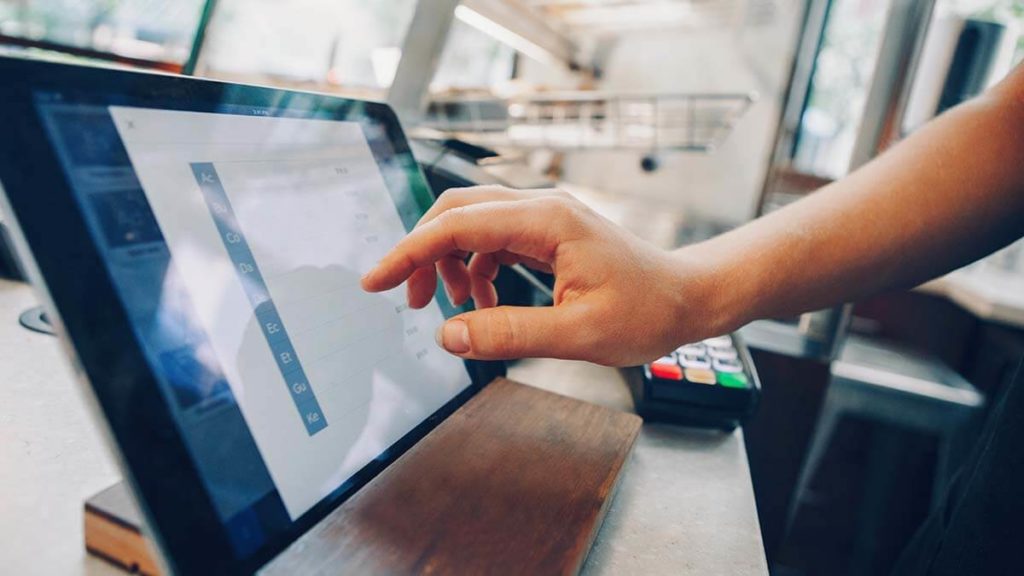As an employer, you are likely familiar with the standard methods of paying employees, such as cash, checks, direct deposit, and pay cards. However, as technology advances, so do the methods of paying employees.
Mobile wallets and pay are slowly becoming the future of payroll. In fact, mobile payments are expected to increase to $503 billion by 2020. If you want to keep up with mobile trends, learn how mobile wallet works and whether mobile payroll is the best option for your small business.
What are mobile wallets?
Mobile wallets, also known as digital wallets, are exactly what they sound like: an electronic wallet. A mobile wallet stores your payment information on your smartphone or mobile device and allows you to ditch your cash, credit cards, and debit cards.
You can use a mobile wallet to pay for goods and services or accept payments from customers. You can also utilize mobile wallets to pay employees.
Advantages and disadvantages of mobile wallet
Like any other payment method, mobile wallets come with advantages and disadvantages. Before using a mobile wallet for payroll, weigh the pros and cons to ensure it’s a good fit for you and your employees.
Some pros of mobile wallets include better security measures, user experience, and protection of sensitive data. And, it can save both you and your employees time by not needing to handle paper checks, cash, pay cards, or direct deposit.
Although mobile wallets have advantages, they have some downfalls, too. Because you need to access a mobile wallet on a mobile device, you may face internet connectivity issues and have problems using your mobile wallet for payments (e.g., application crashes or is under maintenance).
If you decide to pay employees using a mobile wallet, keep in mind you must still withhold payroll taxes accordingly. And, you must pay employees the net amount due after taxes. Be sure to give them a pay stub to show which taxes you withhold. You can track payroll information manually or use payroll software for accurate tax calculations.
Using mobile wallets for payroll
You and your employees might be leery about jumping on the mobile wallet train. After all, standard payment methods have worked for employers for years.
But, using mobile wallets for payroll is becoming more popular as technology evolves. In fact, 39% of individuals with smartphones utilize mobile wallets.
There are a few ways you can pay employees via mobile wallet. Before you kick the idea of mobile wallets to the curb, take a look at some of your payment options below.
Applications
The most common way to access a mobile wallet is through an application (app) on your smartphone, such as PayPal. Within the app, you can pay employees using a credit card, debit card, or bank account transfer.
There are tons of mobile wallet applications to choose from. Depending on the app and payment method (e.g., credit card), there may be a small transaction fee.
Some mobile wallet applications include:
- Venmo
- Apple Pay
- Zelle
Peer-to-peer payments
Platforms or applications may be considered peer-to-peer platforms (P2P). Generally, P2P platforms are free for all users. You can pay employees directly from your bank account, debit card, or credit card. Your employees can receive the funds through their mobile wallet typically within one business day.
With this mobile wallet option, you must manually input how much money you’re sending each employee.
Bank mobile wallets
Banks and credit unions have also begun taking advantage of mobile wallet trends. Banks like Chase now offer mobile wallet options to customers (e.g., Chase QuickPay with Zelle).
With bank mobile wallets, you can transfer money from your bank account to your employees’ accounts. And in most cases, you only need an employee’s phone number and email address to make a payment. Minimal financial and personal information is shared between you and your employee.
If you don’t have a banking institution or don’t want to use bank mobile wallets, don’t worry. You can also utilize the above online options to transfer funds between mobile wallets. However, online options may not be as secure as an established banking institution.
Bitcoin
Along with regular mobile wallets, you can also pay employee using bitcoin wallets.
If you’re unfamiliar with bitcoin, let’s briefly recap. Bitcoin is a type of encrypted digital currency that is untraceable. Although bitcoins technically have no set value, global exchanges affect its day-to-day value.
If you use bitcoin payroll options, you can use bitcoin wallets to pay employees. Bitcoin wallets work similarly to other digital wallets (e.g., transferring money to employees quickly). However, the only payment you can transfer with bitcoin wallets is cryptocurrency.
Other uses for mobile wallets in business
Along with paying your employees, you might also consider using mobile wallets to streamline other business tasks.
You can use mobile wallets in your business for:
- Accepting customer payments
- Paying invoices
- Compensating remote workers (e.g., freelancers)
Questions to ask yourself before using mobile wallet payroll
Before you start using mobile wallet payments to pay your employee, ask yourself a few questions.
Determine if the mobile wallet route is the best option for your business by asking yourself the following:
- Are my employees comfortable being paid via mobile wallet?
- How easy is it to use?
- What kind of information would I need to set up? (e.g., application and employee information)
- What kinds of fees will I be charged?
- Will my employees be charged any types of fees?
Need an easy way to pay your employees quickly and efficiently? Patriot’s payroll software streamlines your payroll process so you can get back to your business. What are you waiting for? Start your 30-day free trial today!
This article has been updated from its original publication date of June 3, 2019.
This is not intended as legal advice; for more information, please click here.
